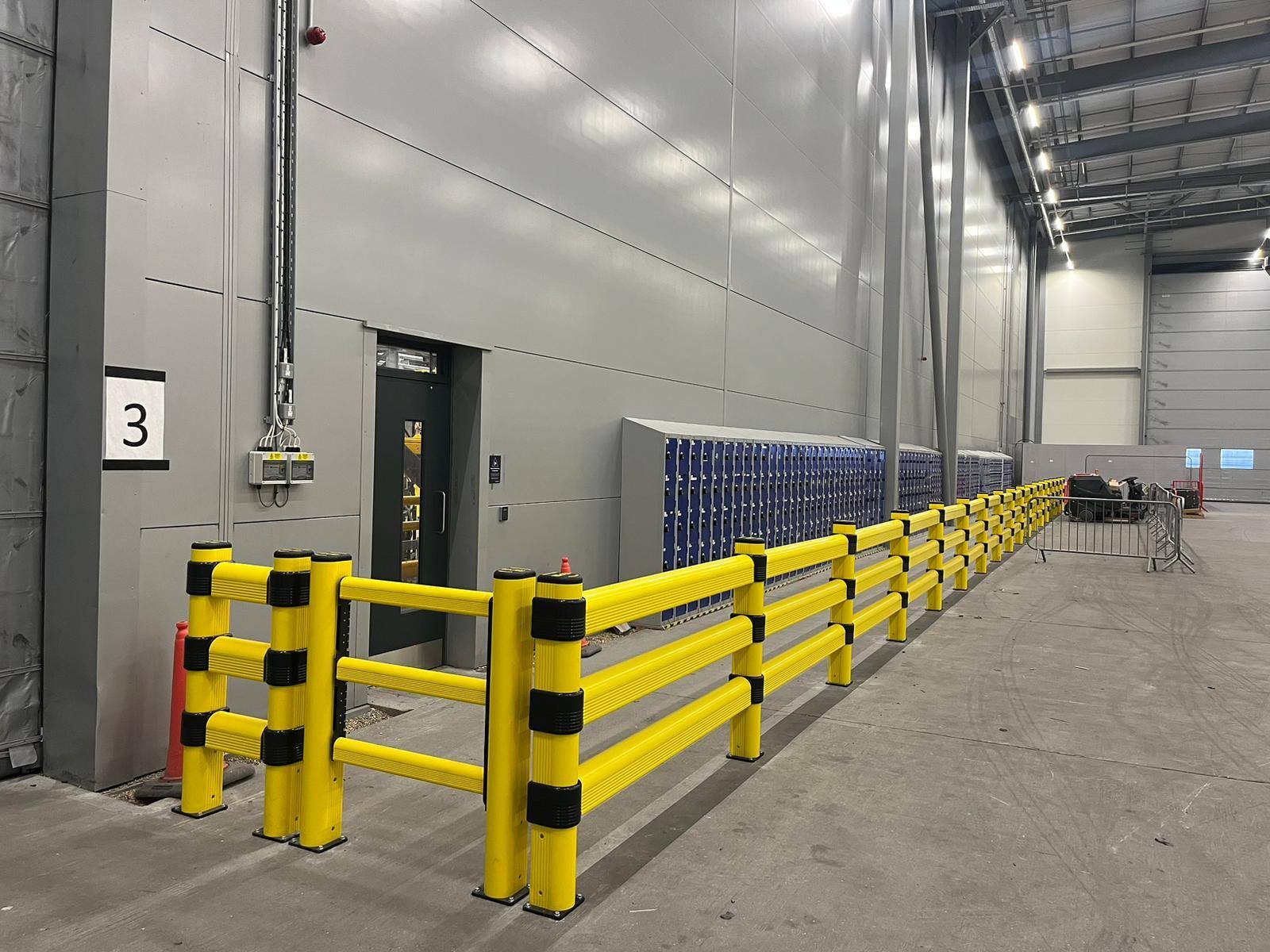Product review of MPM Safeway Gates
 By
Caleb Shaw
·
3 minute read
By
Caleb Shaw
·
3 minute read
If you’re looking for the safest possible options for a polymer safety barrier, then you have probably found that there are a number of different gate types available and you may be considering MPM Safeway Gates as a viable option for your warehouse.
Clarity have been supplying warehouse safety products for over a decade. MPM is the manufacturer of our range of polymer barriers. We are the UK distributor for MPM and supply many blue chip manufacturers across the UK every year.
The MPM Safeway Gates are one of our pedestrian safety gates from the MPM range of polymer safety barriers.

We know that it’s difficult to find unbiased and honest information about polymer safety barriers, the technical data sheets are useful but won’t go into detail about the product. That is why we wrote this article. We will go through the good, the bad and the ugly of the MPM Safeway Gates:
- What makes MPM Safeway Gates so good?
- How it works
- How do MPM Safeway Gates make your warehouse safer?
- How to combine it with other technology to make your factory safer
- What are the downsides to the MPM Safeway Gate?
- Why it may not be a good fit for you
By the end of this article, you’ll have a better idea of whether MPM Safeway Gates or a good fit for you.
What is the MPM Safeway Gate?

The MPM Safeway Gate is at its heart, a pedestrian safety gate, designed to be part of the PED 150, Link 150, and Pin 150 polymer safety barrier range. It operates the same way as a standard pedestrian gate and is available from 400mm wide up to 1 m wide. It can be supplied as an inward opening gate or an outward opening gate but cannot be supplied as a two-way swing gate.
The MPM Safeway Gate features a locking mechanism and a green and red light mounted to the top of the slam post or slamming post. The MPM Safeway Gate is equipped with an adjustable microwave sensor for detecting oncoming FLT and MHE.
The MPM Safeway Gate is manufactured from the components of the PED 150 barrier which has an impact resistance of over 18 kJ at 45°.
How does the MPM Safeway Gate work?
When installed, the MPM Safeway Gate interacts with the microwave sensor supplied with it. The microwave sensor is designed to detect oncoming forklift traffic or other MHEs. Upon detecting an oncoming forklift truck, the beacon mounted on the slamming post switches from green to red, and after a predetermined time, the gate locking mechanism activates to prevent pedestrians from opening the gates.
Once the forklift truck has passed through the crossing, the beacon returns to green, and the gate is unlocked, allowing pedestrians to safely cross.
How does the MPM Safeway gate make your warehouse safer?
If your warehouse has crossings where forklift trucks and pedestrians regularly interact, then you may be looking for a safe way to ensure the safety of the pedestrians. The MPM Safeway Gates enhance the safety of your warehouse by reducing the reliance on operators communicating with machinery operators when crossing these busy areas. By utilizing this technology, you are adding an additional layer of safety and security for pedestrians across your site.
How to combine the MPM Safeway gate with other technology to make your warehouse even safer.
Many factories across the UK now have interactive crossings deployed across their sites. These work by projecting a zebra crossing from above onto the floor below. This projected zebra crossing has many advantages, including resistance to wear and tear from forklifts and integration with stop signs to prevent sign blindness, as well as improved operator awareness of machinery, including trucks. These interactive projected crossings can be used in conjunction with the Safeway gate to greatly improve the safety experience for pedestrians and provide a memorable experience for visitors.
What are the downsides to the MPM Safeway Gate?
Unlike a typical pedestrian crossing, the MPM Safeway Gate relies on detecting traffic movements from forklift trucks, etc. This means that the FLT is given the right of way. It is possible to change this so that pedestrians have the right of way when used in conjunction with a projected stop sign for the FLT.
Another potential downside to the MPM Safeway Gate is that if an FLT is detected after a pedestrian has started to cross, the gates could trap the pedestrian in the crossing area. There are two possible features to address this problem. Firstly, there is a predetermined delay from when the beacon turns red and the gates are locked, giving the pedestrian time to either step back through the gates or cross over. The second option is to have a safety override button on the gate to unlock it.
Is the MPM Safeway Gate the right fit for you?
There are many reasons why the MPM Safeway Gate might not be a good fit for you, including if you already have an incompatible barrier system throughout your site. Another reason why the MPM Safeway Gate might not be suitable for you is if you do not have any materials handling equipment on site and, therefore, no requirement for this type of crossing. Some customers prioritise pedestrians over FLT traffic, which negates many of the benefits of the Safeway Gate.
Ready to reach out? Speak to an expert today...





